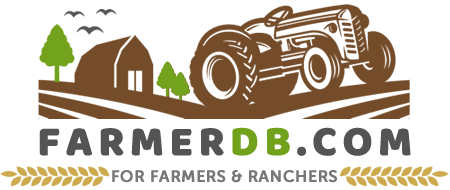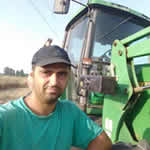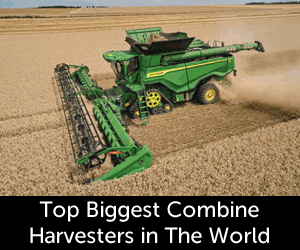The Shropshire sheep is a dual-purpose breed that belongs to the Down family of sheep.
The breed was developed in the 19th century in England, where local horned black-faced sheep were crossed with white-faced breeds like Southdown, Leicester, and Cotswold sheep.
Recognized in the mid-1800s, it spread to Europe and North America for its good grazing ability and quality wool.
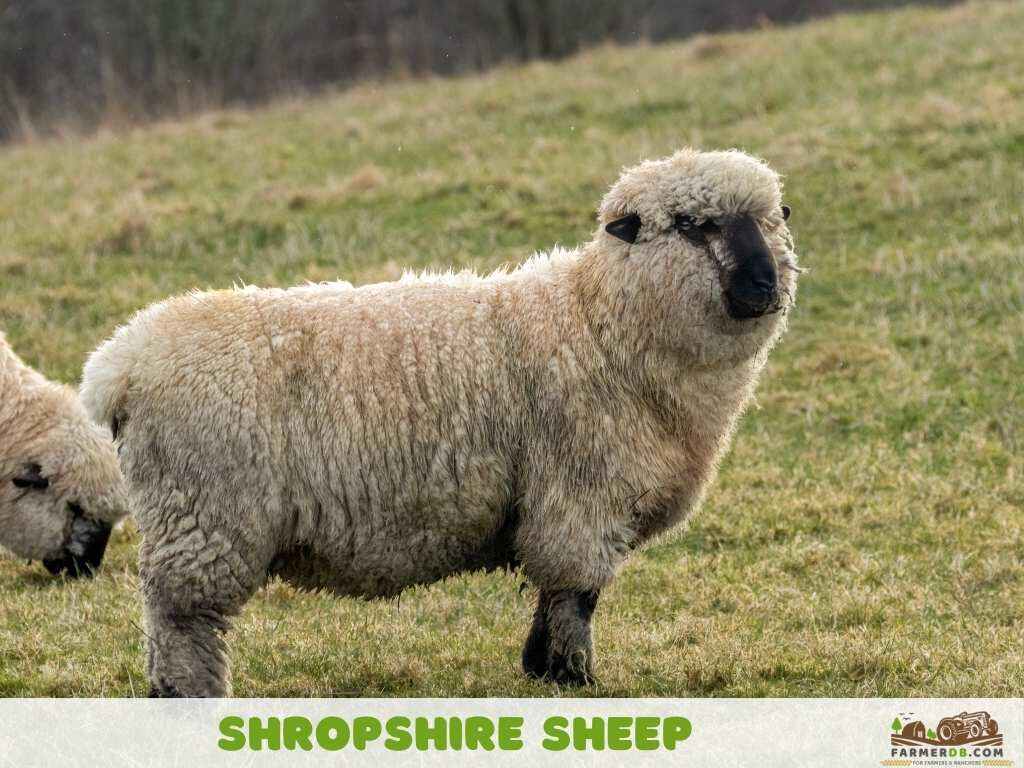
In 1923, the American Shropshire Registry Association bred smaller sheep with more wool on the face and legs, which led to issues like wool blindness. These defects discouraged farmers from choosing the breed, causing its popularity to decline.
As numbers dropped, efforts were made to restore the breed to its original state. By the 1950s, farmers imported rams from England, bringing back the larger size and open face, which helped the breed regain its popularity.
In 2012, all efforts paid off when the breed was removed from the “At Risk” category. The population has grown significantly, with over 5,000 registered ewes and 400 rams in the UK alone.
Contents
Characteristics
Color
This breed has a white body with a medium to dark brown or black face and legs.
Skin
The skin is cherry pink and covered in wool.
Fleece
The dense, fine fleece grows to a good length and covers most of the body, including the scrotum in rams.
Head, Face, Eyes
These sheep have a short, broad head with a clean, soft black face and a thick wool covering on the poll. Rams have a bold head, while ewes have a more feminine appearance. Their face is straight or slightly dished, with a broad muzzle. Dense white wool covers the poll, cheeks, and jaw, while the eyes remain bright and alert. The face is dark brown, with grey nose hairs allowed.
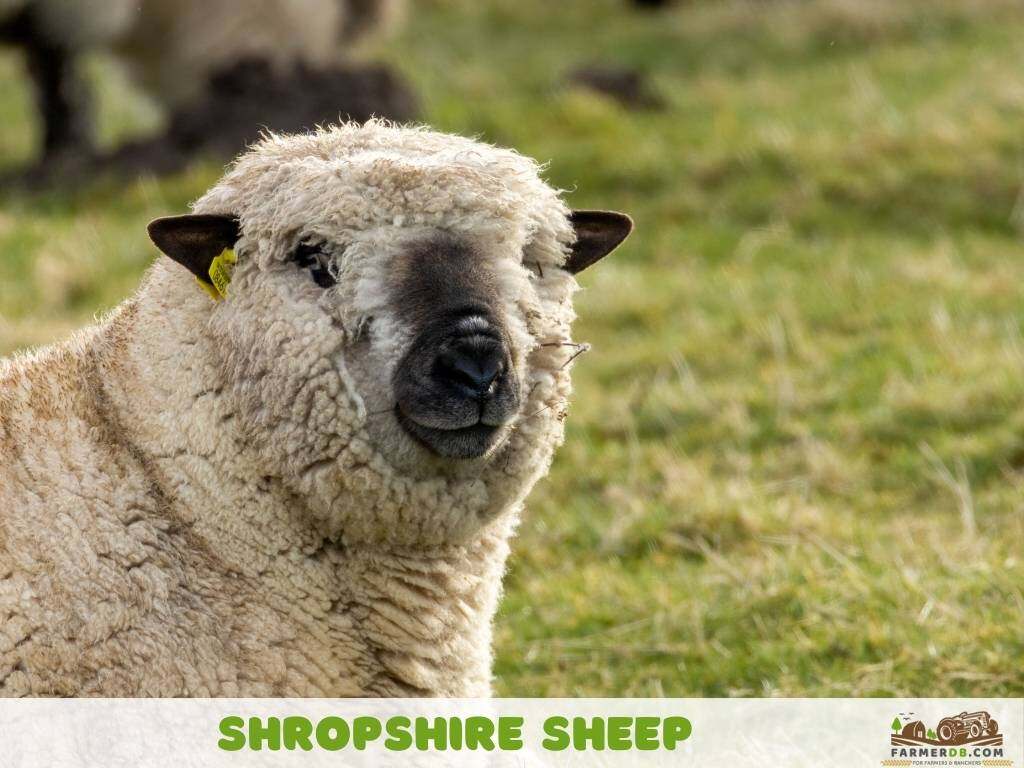
Ears
These sheep have medium-length black ears that are well set to the head and have a moderate thickness.
Horns
Shropshire sheep are polled in both rams and ewes.
This characteristic was inherited from Southdown genetics.
Neck
The neck is short, strong, and muscular, especially in rams, and blends into the head and shoulders.
Shoulders
Body
The breed has a well-fleshed, deep, and symmetrical body with strong shoulders and a broad, straight back.
Its well-sprung ribs, deep and wide chest, and long, wide rump provide a good structure. The dock is well set, and the quarters are full and deep. The forearm is well-muscled, the loins are thick, wide, and long, and the hips are broad and smooth.
Legs
The legs are medium in length, with strong bone structure and upright joints.
Size
These sheep are medium-sized.
They are larger than dual-purpose breeds like Southdown or Hebridean, but smaller than the Columbia breed.
A mature sheep can have an average length of 16.5 to 17.3 inches (42 to 44 cm) and a height of 26.8 to 32.3 inches (68 to 82 cm). Each individual may vary in size, as genetics and diet play a significant role in its physical characteristics.
Lifespan
The lifespan of these sheep is around 10 to 15 years.
They are a long-lived breed, as they can exceed the average sheep lifespan of 10 to 12 years.
Growth Rate
Weight
A Shropshire sheep’s weight varies between 150 to 250 lbs (68 to 113 kg).
Mature ewes can have a weight between 150 to 180 lbs (68 to 82 kg). Rams, on the other hand, have a stronger and bigger body, reaching much higher weights of 225 to 250 lbs (102 to 113 kg).
Some farmers raising this breed have reported even higher weights, with ewes reaching up to 198 lbs (90 kg) and rams 298 to 330 lbs (135 to 150 kg).
Growth Rate and Slaughtered Time
Although this breed is a dual-purpose one, these sheep are capable of fast weight gain.
This was actually one of the traits that made the farmers fight again to restore the breed, as lambs are known to gain weight quickly on pasture-based systems and be ready for slaughter at around 4 to 6 months.
At 4 to 6 months, they can achieve a weight of 92 to 99 lbs (42 to 45 kg). This results in carcasses of about 42 to 49 lbs (19 to 22 kg), with a meat yield of approximately 45% to 49%. According to the UK association, their carcasses are graded as U and R 3L and 3H, according to the EUROP carcass classification system used in Europe.
The U and R 3L and 3H grades indicate that their meat is of good quality and qualifies for meat production.
- U (Good): Indicates a well-muscled carcass with good shape.
- R (Fair): Slightly less muscled than U but still acceptable for meat production.
- 3L (Lower end of Moderate fat cover): The carcass has some fat but not excessive.
- 3H (Higher end of Moderate fat cover): More fat cover but still within an acceptable range for quality meat.
Temperament
These sheep are gentle, calm, and docile for the most part.
They are considered mostly docile because young lambs can be a bit more energetic and more stubborn than mature ones. They are still friendly but require more time to handle. This is not actually an issue, as it can be overcome with training from a young age, allowing them to become well-behaved and cooperative over time.
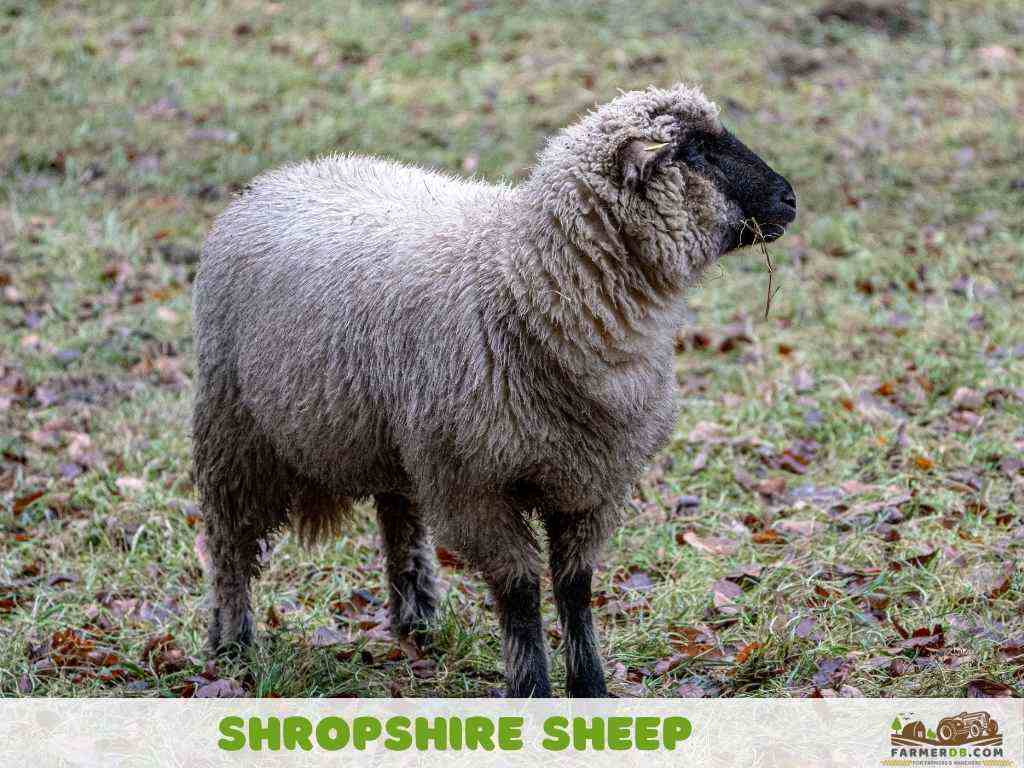
Some restless behavior may appear during the mating season, but this is not a major concern, as it is common in most livestock. Ewes are good mothers but do not have a strong maternal instinct, meaning they do not become overly protective of their lambs, which can be beneficial in some situations.
Also, they love grazing on pasture and other areas.
Their grazing pattern is different from that of other sheep, and they are well known as a good breed for orchards and forests, as they are the least likely to damage trees.
Meat
The meat of Shropshire sheep is high-quality, being lean yet well-marbled, with a balanced fat content that makes it tender, succulent, and full of flavor. From a taste perspective, it is mild and slightly sweet, without the strong, gamey flavor found in some other breeds.
Wool
These sheep produce medium-grade, dense wool with a fiber diameter of 24.5-33 microns and a staple length of 10-15 cm. Their fleece is heavy and fine-textured, with a soft handle and minimal kemp or dark fibers. Classified as Shortwool and Down, the fleece weighs 4.4 to 6.6 lbs (2 to 3 kg) per sheep and has a quality rating of 54s to 56s.
The wool is valued for its springy and durable nature, making it ideal for hardwearing items such as hats, mittens, and socks. It is commonly used in woolen hosiery and knitting yarns, with some of it processed for worsted manufacture
Raising
Feeding
The diet of this breed is simple and not as varied as in other sheep breeds. They can be fed a variety of grasses, clovers, legumes, hay, and silage during colder seasons.
They can be kept on pasture with high-quality grass or grazed in orchards, vineyards, and other tree plantations.
Farmers say that using these sheep in tree plantations has brought them benefits, as they do not need to use large amounts of herbicides for weed control and do not need to mow or trim as often, reducing the wear and tear on equipment.
Shropshire sheep can graze all year, but some farmers suggest keeping them away from trees in spring when new leaves grow. Others say this behavior can be stopped by giving them rock salt or a mineral lick, which keeps them happy and prevents them from eating the trees.
The only thing to keep in mind when using them in a silvopasture system is to avoid letting mature rams into the plantation during the breeding season, as they can become difficult to manage.
Their diet should also include mineral supplements to prevent deficiencies that could lead to health issues.
A source of fresh, clean water should always be available for them to drink as needed.
Environment
This breed is only suitable for pasture-based systems, where they have the freedom to graze all day. It is not recommended for intensive or confinement systems, as they do not adapt well to such conditions.
Climate
Temperate and cool climates are good for them, as their wool provides good protection against lower temperatures. Regions with moderate rainfall or wetter conditions are also suitable, as long as they have a dry place to rest.
They are not ideal for hot or arid climates, as excessive heat and humidity can cause stress and illness.
Shelter
In order to keep them healthy, they need a shelter to protect them from harsh weather conditions, such as heavy rain, snow, strong winds, and excessive heat.
It does not have to be complex, but it should be well-ventilated. A simple shelter or a three-sided structure is enough to provide shade in summer and warmth in winter.
Another important requirement when raising them, whether on pasture or in an orchard, is an electric fence to keep them within their designated area.
Shearing
Shearing should be done once a year in spring or early summer.
In warmer climates, it may be necessary slightly earlier, while in colder regions, some farmers prefer to wait until mid-summer. Regular shearing helps prevent wool matting, parasite infestations, and skin issues.
How many sheep per acre?
On high-quality pasture, you can raise 6 to 8 sheep per acre.
If you raise them in tree plantations, you can keep 2 to 3 sheep per acre. Some farmers follow the 1 sheep per acre rule in these systems, but it depends on the diet provided and pasture availability.
You can always adjust the number based on your own conditions and management practices. To do this, you should check pasture quality, monitor signs of overgrazing, and track the animals’ weight.
Breeding
Shropshire sheep can be bred starting at 12 to 16 months of age. They reach puberty earlier, around 7 to 9 months, but should not be bred that early, as the ewe’s body may not be ready for pregnancy.
They are seasonal breeders, with ewes coming into heat during autumn, usually around the end of September. They can also be bred earlier, in August, for December lambing, but autumn breeding is preferred as it aligns lambing with spring and fresh pasture.
Fertility in this breed is good, with a lambing percentage of 140%. The gestation period lasts about 147 to 152 days. Ewes do not usually require assistance during lambing, as they are known to lamb easily without issues.
The lambing rate is 1.2 to 2 lambs per ewe per year. Lambs are born with a good fleece, are active, and start suckling well. The milk production of the ewe is sufficient to feed them until weaning.
Mothers are generally good, but they should be monitored, as they do not invest a lot of energy in caring for their lambs and may need occasional encouragement.
Health Issues
There are no specific health issues unique to this breed. They are hardy animals, but they can still be affected by common health issues in sheep.
Why should you raise it?
There is no reason not to raise these sheep on a small farm with other livestock or in a homestead setting. They are calm, low-maintenance, and have good feed conversion. The only challenge may be their availability.
Even though they are no longer at risk, they are still harder to find than more common breeds. However, if you embark on the journey to find farms that raise them, you will not be disappointed by their quality and excellent meat.
Advantages
- High-quality meat
- Hardy
- Efficient grazers
- Good lambing ability
- Docile temperament
- Low maintenance
- High fertility rates
- Smooth lambing process
Disadvantages
- Limited availability
- Not suitable for intensive farming
- Moderate wool value
- Can be stubborn when young
- Average mothering skills
- Heat sensitivity
References
Do you have any experience with the topic discussed here?
Would you like to improve the information shared and contribute your practical knowledge on the subject?
Your real-world experience as a farmer or rancher could greatly benefit other members, and the community would deeply appreciate your contribution.
